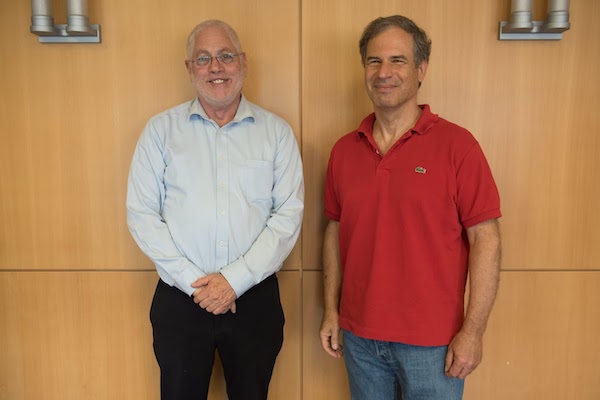When astronaut Eytan Stibbe takes off into space at the end of March, he will take with him a copy of the Nano Bible, developed at the Technion. This unique technological item was lent to him by the Israel Museum in Jerusalem, where it is currently on display in the Shrine of the Book alongside the Dead Sea Scrolls.
The Nano Bible is the most innovative and smallest copy of the Bible that exists. Technion scientists engraved the 1.2 million letters of the Bible on a gold-plated layer of silicon (on a surface the size of a grain of sugar) by means of a focused ion beam. The ancient text on the chip can only be read using a microscope capable of 10,000 times magnification. While creating the Nano Bible, Technion researchers sought to demonstrate the wonders of miniaturization and how this ultimate modern-day miniaturization can be used.
The idea of miniaturizing the Bible was conceived in 2007 by Professor Uri Sivan, now President of the Technion, and Dr. Ohad Zohar of the Russell Berrie Nanotechnology Institute (RBNI), as part of an educational program developed at the University intended to increase young people’s interest in nanotechnology. The production of the chip and development of the software that allows engraving to be carried out was developed by engineers in the Zisapel Center for Nanoelectronics at the Technion.

Professor Uri Sivan, President of the Technion, and Dr. Ohad Zohar.
“The Bible is the oldest and most important text for the Jewish people and one of the most important for the entire world. It’s a cornerstone of human culture,” said President Sivan. “The Nano Bible being taken into space connects distance and time, the past and the future, and ancient human culture with modern technology.”
Eytan Stibbe said, “The Nano-Bible that I’ll take with me to the International Space Station symbolizes a synthesis between groundbreaking technology and respect for our heritage — as humans. An ancient text which has been written using innovative technology, allows us to look hopefully into the future, while smiling about our past. I’m looking forward to the opportunity to look at this technological marvel as I hover in space.”
Stibbe is a member of the Ax-1 crew and part of the Rakia mission, which is led by the Ramon Foundation in cooperation with the Israel Space Agency and the Ministry of Science and Technology.
The mission, intended to stimulate curiosity and creativity through human space travel, is dedicated to recognizing the potential of the study of the universe, raising awareness of the importance of preserving the planet, while deepening international cooperation and promoting the space industry. The mission will reach students, educators, researchers, cultural figures, and thinkers as well as the general public through dozens of scientific experiments and Israeli technological demonstrations carried out on the station.


